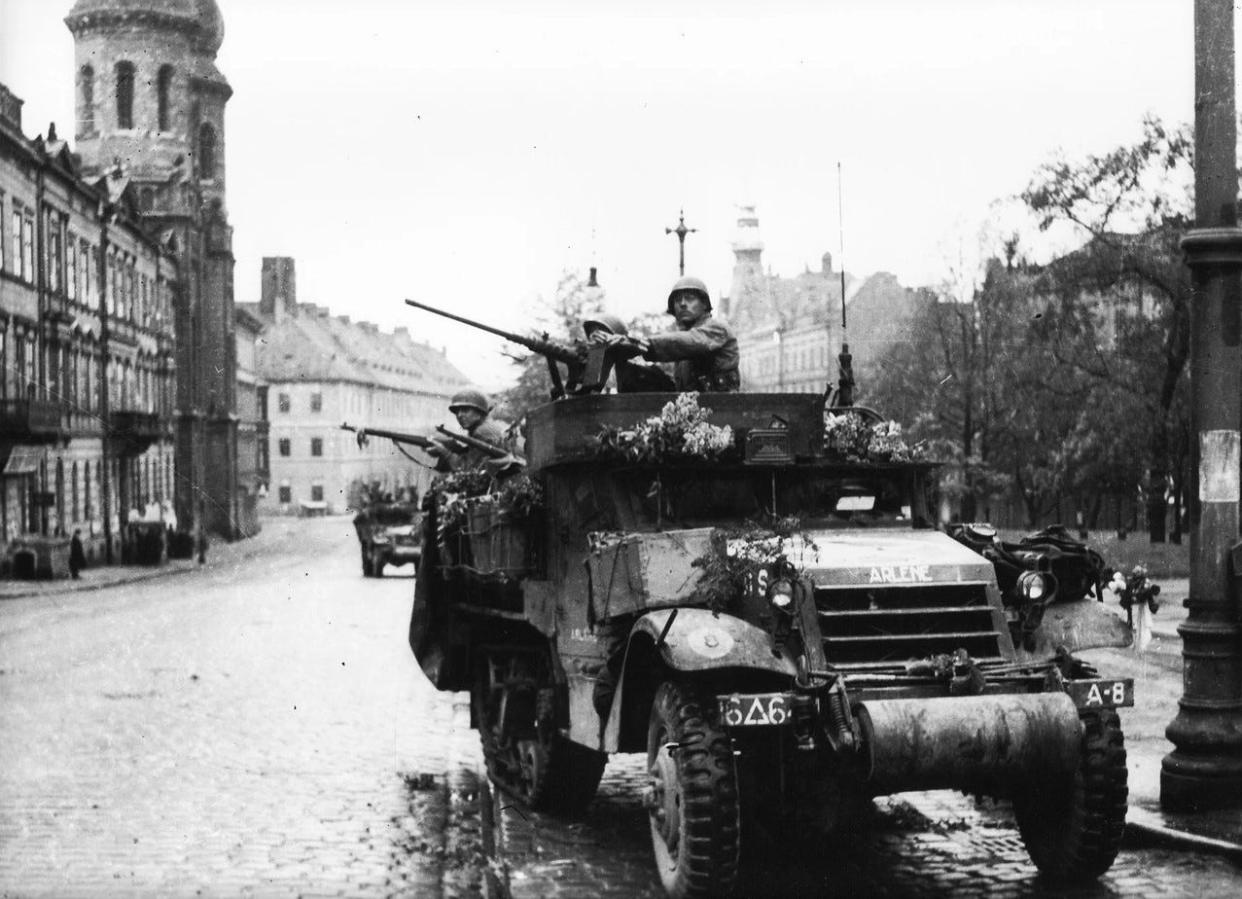Blue Collar Philosopher: 'The Liberators of Pilsen'

Camp Chaffee troops were major contributors to the war effort in World War II right up to the end. In the closing days of the war, Gen. Eisenhower at Supreme Headquarters Allied Expeditionary Force (SHAEF) was concerned the Nazi’s would create a “National Redoubt" and continue fighting. Hitler had ordered German troops to create a final stronghold and sustain the war. Third Army was ordered to eliminate this pocket and rushed eastward into Czechoslovakia.
According to Gen. Patton, it was the “furthest progress to the east of any western army." In the vanguard was the U.S. Army’s 16th Armored Division (AD). The people of Pilsen, Czechoslovakia, remember well the day “soldiers with a white star came to Pilsen." The day was May 6, 1945, and the soldiers were the 16th AD, who had trained and deployed from Camp Chaffee. They became known as "The Liberators of Pilsen."
The 16th AD, nicknamed "Armadillos," was the last U.S. armored division to see combat. In the drive east, other commanders wanted to use more experienced troops to lead the way. Patton insisted the 16th spearhead the move. He felt it was important the new unit do their part. Patton was now in command of the largest field army ever assembled by the United States. This included six armored divisions and more than a half-million soldiers.
The Armadillos’ first combat mission came as the 23rd Cavalry Squadron protected the flanks of the U.S. Army’s 86th Infantry Division (ID). During that operation the 23rd seized several small villages against slight resistance.
On May 5, 1945, the division moved into staging areas in Waidhaus, Germany. The following day they began their assault. Pilsen was famous for its beer and Skoda Works, one of the largest armament manufacturers in Europe. In the early hours of May 6, Combat Command B (CCB), led by Col. Charles H. Noble, was on the move. CCB soon captured the high ground west of Pilsen. Noble decided to push his troops into the city.
In his book, “The Liberators of Pilsen," author Bryan Dickerson states, “Col. Noble was taking a calculated risk that surprise, firepower and audacity would enable him to liberate Pilsen and subdue a much larger German force holding it. Noble’s gamble worked."
CCB secured Skoda Works and began the work of clearing the city of German defenders. Other elements of the 16th secured the Pilsen airport, capturing several new Messerschmitt fighter jets. When troops arrived at Pilsen’s Republic Square, they were mobbed by joyous Czech citizens.
In a letter home, 1st Lt. John Patterson wrote, “… I never saw so many people happy at one time … it made all we had been through worth it …The Czechs are wonderful people."
Even as the celebration ensued, the fighting continued. After receiving flowers and food from the Czechs, American troops resumed their mission. But by now many Germans knew they were defeated and most resistance came from pockets of SS troops and snipers. All fighting ended by May 8 and the 16th prepared to advance on Prague. But it was not to be.
Desperate pleas for help came from the Czech capital of Prague and Patton was anxious to help them. However, political concerns intervened, and Eisenhower halted Third Army. The Russian army was also nearing Prague and the SHAEF wanted to prevent “international complications."
In the years after World War II, it seemed the memories of the Liberation of Pilsen was forgotten. The Communist Russians seized power and in 1948 began a campaign to blot out the history of the 16th AD and the role of the U.S. Army in Czechoslovakia.
However, with the fall of the Soviet Union the people of Pilsen resurrected the memory of that fateful event. Since May 1990, the Pilsen Liberation Festival celebrates the day “soldiers with a white star" came to town. Annual events include a wreath laying ceremony at the 16th AD and 2nd ID memorial. There is also living history camps including, a World War II U.S. Army and a current US Army camps. This year’s schedule includes the Pilsen Philharmonic Orchestra presenting “The Best of America" along with other traditional Czech folk songs and dances.
According to The National WWII Museum website, the Pilsen Liberation Festival is “one of the most touching modern-day tributes to the American armed forces in Europe. And also serves as a reminder to the horrible period of Soviet oppression following WWII." Pilsen still holds the veterans of the 16th in high regard as veterans of the 16th reciprocate the affection.
Robert Muthersbaugh, a 16th AD veteran, is quoted as saying: “I was the chief radio operator, so my vehicle was one of the first ones into Pilsen – we came in a halftrack. And it was an honor and a privilege to free the Czech people … I was so humbled to be honored – to have the great honor to be one of the liberators."
Lance Sumpter is a local writer, veteran and refugee of the '08 Recession. He can be contacted at lsumpter00@gmail.com.
This article originally appeared on Fort Smith Times Record: Blue Collar Philosopher: 'The Liberators of Pilsen'

